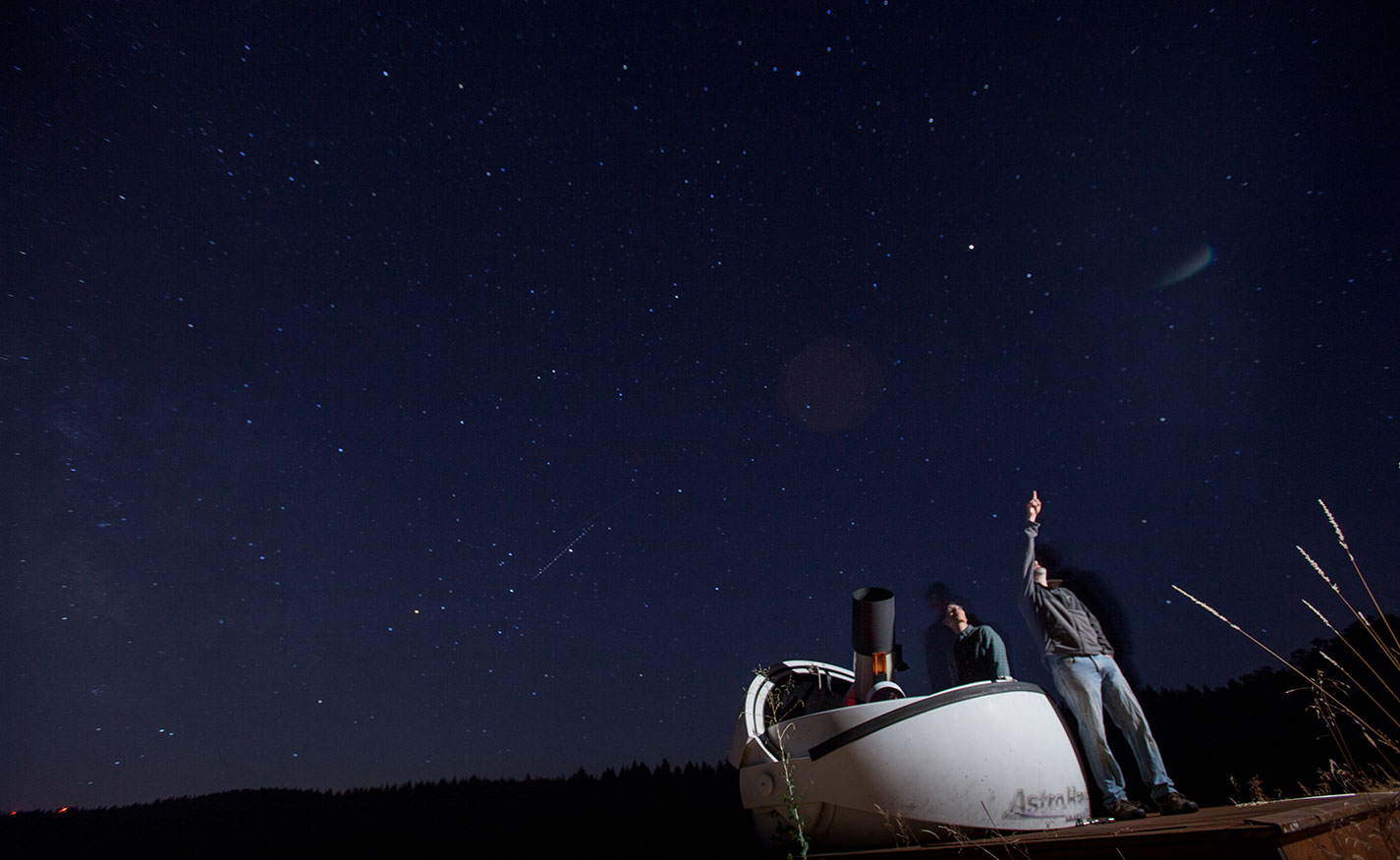Many types of stars shine in the sky. Some glow red, others are yellow. Some wax and wane from bright to dim in a few hours, while others remain unchanged across the span of a human lifetime.
Physics professor Rick Watkins pays attention to one particular type of star — the pulsating variable — to glean answers about the inner workings of these mysterious celestial bodies.
“You see most stars as points in the sky. But if they’re variable, you can connect the oscillations with what’s happening inside them,” he says.
“By understanding stars, you better understand the processes that produced elements like carbon and oxygen in the universe — elements necessary for the development of life.”
Watkins is among eight professors and 14 students who spent their summer conducting research through Willamette University’s Science Collaborative Research Program (SCRP).
The program helps professors make strides in their work and students acquire new skills to help them pursue careers in science.
“These are skills you need for graduate school,” says Kristian Barajas ’16, a physics major. “I’m learning how to analyze and process data, and I wouldn’t have had that opportunity if not for SCRP.”
Becoming Scientists
As part of his project, Barajas spent clear evenings at a small observatory in WU at Zena. Throughout the night, he took a series of images of a star that pulsates in three independent frequencies at once.
The star changes brightness due to an imbalance between gravity and pressure. With the images he captured, Barajas hopes to better understand the star’s internal structure and how it functions.
“I have no experience in astronomy or astrophysics, but I was able to jump right in,” Barajas says. “Willamette has a lot of opportunities like this. You just have to take advantage of them.”
Hana Busse thought the same thing when she applied to work with assistant professor Katja Meyer, who studies the geologic record of global climate change.
For their project, Busse ’16 and Meyer aimed to learn more about the impact of climate warming on the oceans by studying rocks from China. The Chinese rocks — deposited during the end-Permian mass extinction 252 million years ago, when more than 90 percent of marine species suddenly died — harbor important clues about the effects of such warming.
“The climate warming at the end of the Permian era may be a good analog for modern human-caused climate warming, which is causing the oceans to warm and lose oxygen — with negative impacts on marine life,” says Meyer. “We want to understand what has happened in the past as a way to help us understand what will happen in the future.”
By examining the size distribution of pyrite mineral grains found within the rocks, Meyer and Busse could tell whether ocean conditions during that time were oxic, anoxic or sulfidic. The size of the pyrite grains correlates with the amount of hydrogen sulfide — and corresponding loss of oxygen —in the water. Through such experiments, Meyer and Busse hope to better grasp the connection between the loss of oxygen in the oceans and mass extinction.
“I’m interested in the co-evolution of life and the environment on earth,” Meyer says. “The end-Permian mass extinction was a really exciting time — an abrupt warming event that led to huge changes in both the environment and the record of life.”
In the lab, Busse examined samples using scanning electron microscopy (SEM), an experience that will benefit her future graduate studies in oceanography.
“I thought it would be cool to study ancient oceans,” says Busse, a biology major. “Learning new research skills and using new equipment will help me going forward.”
Educational Advantage
For Watkins, SCRP enables students to discover advanced research techniques — skills that can’t be learned from a textbook.
“They’re applying what they learned in the classroom to do actual research,” he says. “Without it, it’s like spending all day doing soccer drills but never playing in a game, or learning the mechanics of playing an instrument but never playing a song. This is an important part of their education.”
Students participating in SCRP receive a stipend and an allowance for food and housing. In the fall, they’ll give oral presentations about their work to the campus community. They will also present posters at the annual Murdock Undergraduate Research Conference in Vancouver, Washington.
More information about the research program can be found online on the SCRP landing page.


